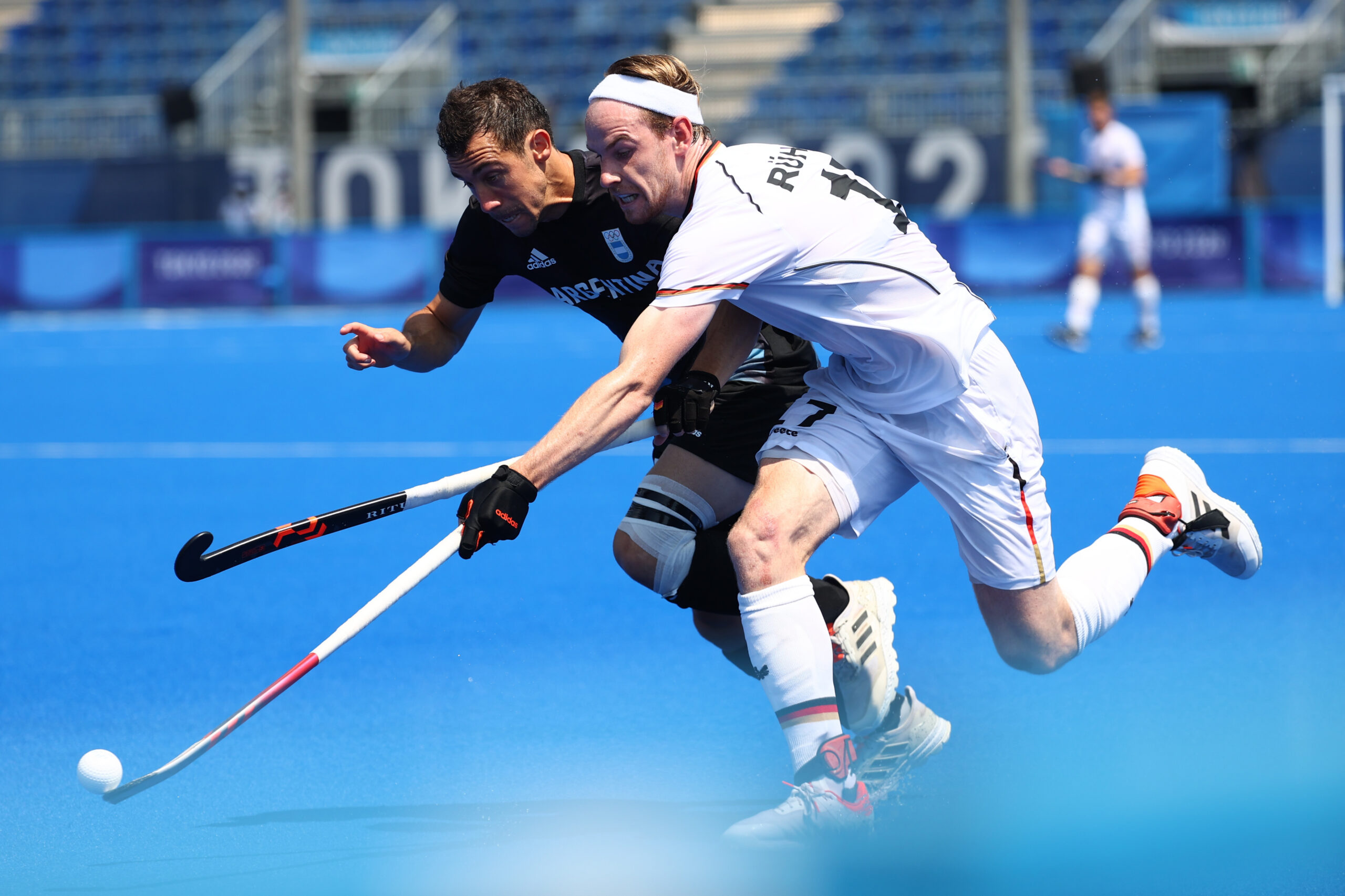Acceleration is the ‘rate of change of velocity per unit of time’. This is usually assessed with a test such as a 10m sprint and is measured in ms−2. In simple terms, this is how quickly you can increase your velocity from either zero (standing still) to sprinting, or whilst still in motion (transitioning from a light jog to a max effort sprint, for example).
Why is this important for me as a hockey player you may ask? I didn’t come here for a physics lesson! Well, put simply, the faster your rate of acceleration, the more likely you are to get into effective positions in both attack and defence.
Examples of when acceleration is important are:
● Getting off the line as fast as possible when defending a short corner
● Stopping and re-accelerating in the opposite direction during a counterattack
● Creating separation between yourself and the defender when seeking out goal-scoring opportunities as a forward
We know from research that high-speed accelerations (over 2m/s-2) typically occur around 50 times per match in international men’s hockey, and that players are required to perform an acceleration effort on average once per minute whilst on the pitch. Midfielders in women’s field hockey are likely to perform a greater number of accelerations too (Gabbett, 2010). This provides useful information, as it appears that the ability to perform repeated accelerations is a key characteristic of hockey, and thus a key physical demand.
You can improve your acceleration for hockey in a number of ways, which we’ll now look at.
Acceleration Principles
The key principles of acceleration can be broken down into the following, taken from the EXOS methodology:
● Position
● Pattern
● Power
Position means firstly, you need to ensure you can hit effective sprint positions at low velocity. This is often related to mobility, as if you aren’t mobile enough to hit the right shapes, you will always be limited in your ability to sprint effectively. Drills such as wall drill posture holds are excellent for developing key positions, whilst also focussing on hip flexion range of motion.
Pattern refers to learning the correct acceleration patterns, that enable effective increases in speed. Here you should practice ‘transfer’ drills such as partner resisted marching, band resisted marches and sled drills for example.
Power is the final stage, and is where you put these prior principles into practice through maximal velocity sprint efforts, either resisted or traditional free sprints over 10-30m. Without the prior steps, it’s hard to hit effective shapes and pattern these effectively, which is why learning the correct technique is vital.
The Speed Equation
The four key elements of sprinting are:
● High force
● Optimal direction
● Minimal time
● Low mass
High force means that in order for you to accelerate quickly, you need to produce a lot of force. This comes down to strength training and plyometrics, to generate large force potential in the key muscles that contribute to propulsion during acceleration. Research suggests that the soleus and gastrocnemius contribute most significantly to vertical forces when sprinting at speeds up to 7m/s which increases stride length.
The gastrocnemius contributes to propulsion and upward impulse, acting as an accelerator and a supporter during acceleration, whilst the hamstrings and gluteus medius act as accelerators. This provides significant insights into the role of the key force producers during acceleration, and can guide our exercise selection when seeking to improve it.
Optimal direction refers to the speed principles mentioned earlier. By developing better positions and patterns for optimal sprinting, you can orientate forces more effectively and therefore project yourself forwards in order to accelerate faster, without wasting energy.
Minimal time means that you should try to reduce your ground contact time by becoming more ‘elastic’. Our tendons act as modulators of the forces transferred from muscle to bone, and by increasing their stiffness to an optimal level we can become more explosive by transferring forces more effectively. Plyometrics are an excellent means of developing this, as are high force isometrics. Tendons adapt by becoming stiffer and then increasing in thickness.
Low mass is the final piece of the puzzle and ultimately means being lean in order to increase our mass specific force or ‘relative power’. If you keep your power the same, but drop your mass, your relative power will increase which is associated with faster acceleration. Conversely, if you keep your mass the same, but increase your power, the same will happen. Both should be the goal, but always work with a qualified nutritionist or dietitian when aiming for body composition changes.
Putting It All Together
The key take homes from this article are that improving acceleration is a multi-faceted process, but one that we know a lot about the key contributors to it.
1. By improving our force expression in the key muscles (soleus, gastrocnemius, hamstrings and gluteus medius) we can increase propulsion during acceleration
2. By practising drills that improve our acceleration positions and patterns we can orientate forces effectively, reducing energy inefficiency
3. By including plyometric exercises and high force isometric exercises, we can develop stiffness which contributes to a more effective transfer of forces and reduced ground contact times
4. By increasing our relative power, we give ourselves the best chance of improving our acceleration performance through greater efficiency




